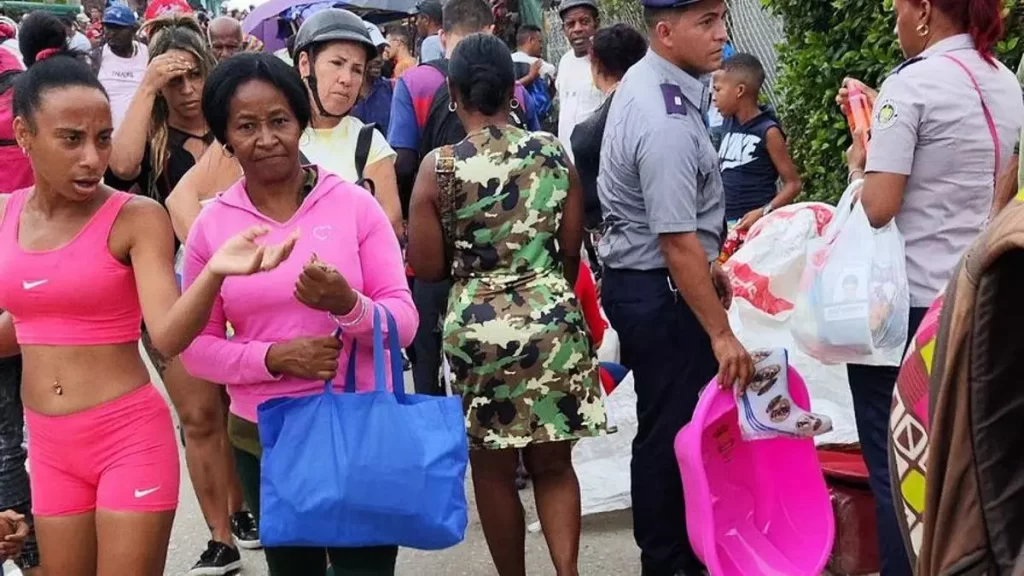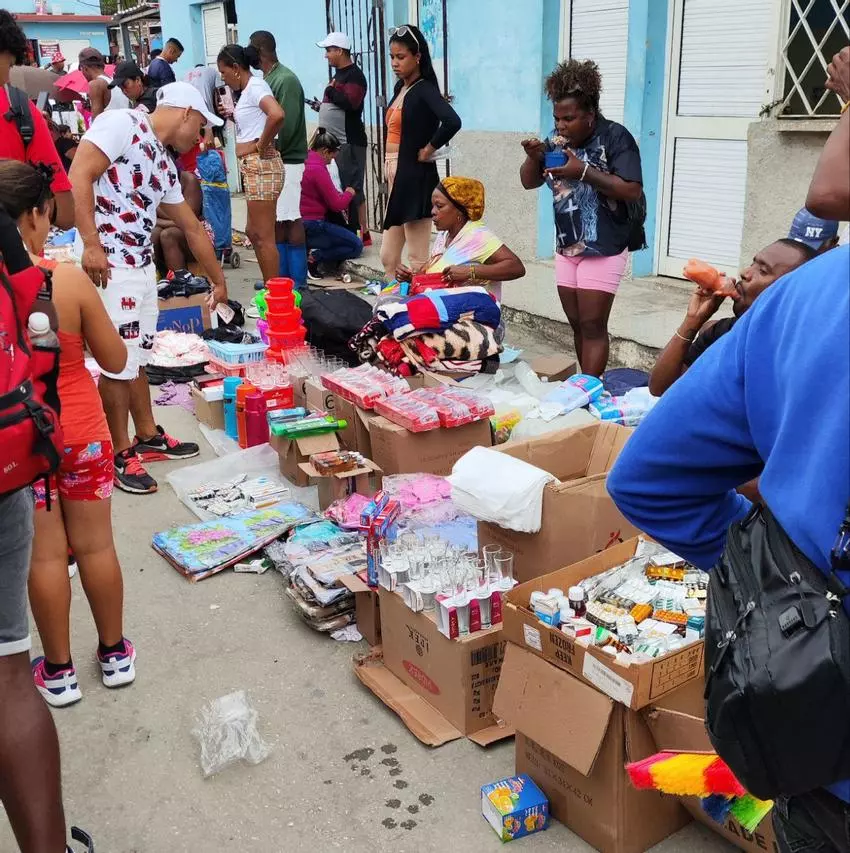The sale of medicines and the purchase of foreign currency, all informal, happens in full view of the police and despite the operatives

![]() 14ymedio, Juan Diego Rodríguez, Havana, 14 April 2024 – The market known as La Cuevita, in San Miguel del Padrón, on the outskirts of Havana, is not larger than the one that spreads under 100 and Boyeros in the capital, but it does have a greater impact. “The stall space for the self-employed is small, but the informal sales around them are huge, and that is where the majority of buyers go.”
14ymedio, Juan Diego Rodríguez, Havana, 14 April 2024 – The market known as La Cuevita, in San Miguel del Padrón, on the outskirts of Havana, is not larger than the one that spreads under 100 and Boyeros in the capital, but it does have a greater impact. “The stall space for the self-employed is small, but the informal sales around them are huge, and that is where the majority of buyers go.”
Nelly, who accompanied 14ymedio on a visit to La Cuevita this Friday, lives in Ciego de Ávila, but comes by every month. Before, she used to work as a mule going back and forth to Haiti, but with the uptick in violence in that country, she has changed it to the markets of Havana. She’s not the only one. “We all arrive with suitcases and then we return to our provinces to sell things there.”
“It’s like arriving at the bus station, you know?” says Raniel, who has come to La Cuevita to buy medicine. In legally established self-employed stores, you can find jewelry, watches, clothing, caps or glasses, but it’s the informal sellers who display an infinite arsenal of items of all kinds. Among them, medicines stand out especially.
“They arrive and stand in the hallway, spread a box full of medicines and stand there to sell them,” explains Raniel, who prefers to buy in La Cuevita than on online sales sites, where they are more expensive. It is easy to see that most of them are imported, that is, brought from outside by mules, but quite a few of them are Cuban-made, which indicates that they come from the state market. “Cuban enalapril* costs 250 pesos per blister here, and in Revolico it costs between 300 and 350 pesos.” And in the pharmacy? “Do not even mention the pharmacy! Enalapril is among the missing”, says Raniel.
Anti-inflammatories, analgesics, diclofenac with paracetamol, antibiotics of all kinds… Anyone would say, visiting these stands, that in Cuba there is no problem with the shortage of medicines that chronically afflicts the health system.
Other striking stands are those for purchasing currency. As with medicines, as if it were a legal activity, huge signs indicate the exchange rate: the euro at 350 pesos, the dollar at 345, and the freely convertible currency (MLC), at 270. “People arrive and, just as if it were a Cadeca [Exchange place], take out their fulas** or take out their euros and sell them there, without hiding anything,” says Nelly, who is no longer so surprised by the activity. And the Police? Because, on paper, this illegality carries high fines. “They have to bribe the inspectors, because there are operatives every day, but they just remain very calm”.

During the tour, this newspaper was able to verify, in fact, that there are numerous agents moving through the corridors. “The police have to solve their problems too, that’s why they are here buying their things,” argues Nelly. In the time that she has been dedicated to reselling in the province, she has never been fined, but she has a friend who has not been so lucky. “She already has 8,000 pesos in fines, but she comes back, comes back and comes back, because it is true that we have no other way to make a living in this country.”
If you are in La Cuevita for long enough, you can also see that many surrounding houses are used as warehouses, also informal. It is in these places where small appliances abound, such as pressure cookers, induction cookers and fans.
It is difficult to make your way through the aisles due to the number of people there, who, between jostling, mix with those who shout merchandise: liquid detergent, soap, toothpaste, chicken, oil, medicines, spaghetti, elbows, potatoes… “Even packaged coffee like the one from the bodega [ration store],” says Raniel, who is convinced that many of these are products ‘diverted’ from the state market.

The boy takes care of himself among the overwhelming crowd: “Here you take out your wallet, you pay and in the process of putting it in your pocket they take it from you.”
La Cuevita is a place known by Havana residents since the 80s, although it did not begin to gain splendor until the immigration reform of 2013, which allowed Cubans to leave and enter the Island more easily.
But it was with the established rule of eliminating tariffs on food and medicine, after the demonstrations of 11 July 2021, that the market has become crowded.
A mirror seller approaches: “If you buy me the large and medium one, I’ll give you a small one,” he offers, as if he were at a capitalist street market. “There is a very big economic life,” Raniel concedes. “Here people come to fight, to make a living.” And he jokes: “It’s as if capitalism existed in Cuba.”Translator’s notes:
*Enalapril: ACE inhibitor taken to lower blood pressure
**fulas: Cuban slang meaning US Dollars
Translator: Norma Whiting
____________
COLLABORATE WITH OUR WORK: The 14ymedio team is committed to practicing serious journalism that reflects Cuba’s reality in all its depth. Thank you for joining us on this long journey. We invite you to continue supporting us by becoming a member of 14ymedio now. Together we can continue transforming journalism in Cuba.
